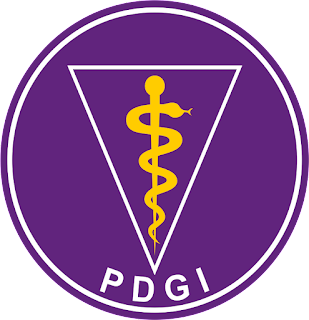The use of straightwire technique and myofunctional therapy to treat anterior open bite due to tongue thrusting (case report)
Budi Suhartono
Abstract
Background : In contrast to the posterior teeth, which are still in occlusion, No incisal contact in the anterior part of the maxilla and mandibula between the vertical dimension is referred to as anterior open. Skeletal irregularity during the expansion of the intermaxillary gap and poor habits can both contribute to openbite. Tongue thrusting is one of the undesirable practices that might result in anterior openbite. Objective : This treatment's objective is to break negative habits by employing myofunctional therapy to develop a healthy swallowing pattern and train the posture of the tongue and lips while at rest. Case Report : A 19-year-old woman who protruded her tongue visited a dental office with the main complaint of an unattractive anterior open bite. She had an open bite of 12 12 21 22 dan 31 32 41 42, a Class II Division I subdivision Angle, a Class II skeletal relationship (protruding maxilla, retrusive mandibula, and bidental protrusive), an overjet of 6.87 mm, an overbite of 0.43 mm, and a Class II skeletal relationship. Case Management : myofunctional therapy combined with straightwire orthodontic treatment. Result : The anterior open bite is rectified, the overjet is reduced to 2,2 mm, and the overbite is increased to 2 mm after 16 months of therapy. The patient's poor swallowing pattern has improved, and their terrible tongue-trusting behavior has decreased. Conclusion : Straightwire method and myofunctional therapy are both effective treatments for anterior openbite repair brought on by tongue thrusting.
Keywords
anterior openbite; tongue thrust; myofunctional therapy
References
Singh G. 2007.Textbook of Orthodontic. 2nd ed. New Delhi : Jaypee Brothers Medical Publishers (P) Ltd.
Atkinson S.R. 1966. “Open-bite†malocclusion. Am J Orthod 52:877-886.
Bhalajhi, S. I. 2003. Orthodontics, the Art and Science. Arya Publish. New Delhi. Hal. 415-422, 433-438.
Proffit, W.R. and Mason, R.M. 1975. Myofunctional therapy for tongue-thrusting: background and recommendations. J Am Dent Assoc, 90, 403–411.
Bigenzahn W, et al. 1992. Myofunctional therapy in patients with orofacial dysfunctions affecting speech. Folia Phoniatr (Basel), 44 (5), 238–44.
Sondhi A. 2007. Effective and Efficient Indirect Bonding : The Sondhi Method. Semin Orthod, 13 : 43-57.
Harden, J., and Rydel, C.M. 1983. Effectiveness of Therapy : A Study of Changes in Swallowing Habits Resulting from Tongue Thrust Therapy Recommended by R.H. Barrett. International Journal of Orofacial Myology. 9 : 5-11.
DOI:
http://dx.doi.org/10.30659/odj.10.0.91-97
Refbacks
- There are currently no refbacks.

This work is licensed under a
Lisensi Creative Commons Atribusi-BerbagiSerupa 4.0 Internasional.
Contact us: Odonto Dental Journal: Jl. Raya Kaligawe Km.4, PO BOX 1054/SM Semarang, Central Java, Indonesia, 50112. Email: odontodentaljournal@unissula.ac.id




